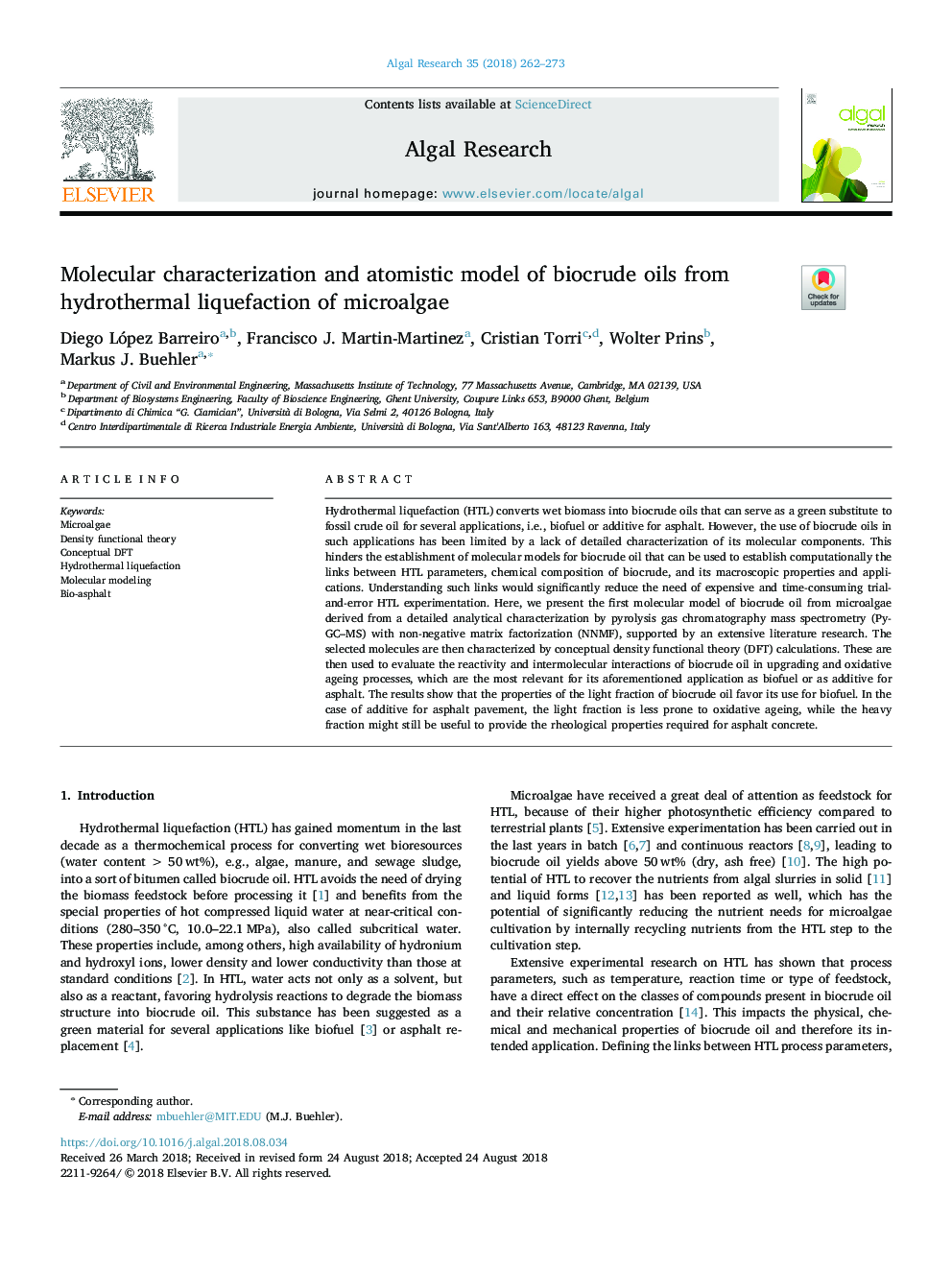| Article ID | Journal | Published Year | Pages | File Type |
|---|---|---|---|---|
| 10128931 | Algal Research | 2018 | 12 Pages |
Abstract
Hydrothermal liquefaction (HTL) converts wet biomass into biocrude oils that can serve as a green substitute to fossil crude oil for several applications, i.e., biofuel or additive for asphalt. However, the use of biocrude oils in such applications has been limited by a lack of detailed characterization of its molecular components. This hinders the establishment of molecular models for biocrude oil that can be used to establish computationally the links between HTL parameters, chemical composition of biocrude, and its macroscopic properties and applications. Understanding such links would significantly reduce the need of expensive and time-consuming trial-and-error HTL experimentation. Here, we present the first molecular model of biocrude oil from microalgae derived from a detailed analytical characterization by pyrolysis gas chromatography mass spectrometry (Py-GC-MS) with non-negative matrix factorization (NNMF), supported by an extensive literature research. The selected molecules are then characterized by conceptual density functional theory (DFT) calculations. These are then used to evaluate the reactivity and intermolecular interactions of biocrude oil in upgrading and oxidative ageing processes, which are the most relevant for its aforementioned application as biofuel or as additive for asphalt. The results show that the properties of the light fraction of biocrude oil favor its use for biofuel. In the case of additive for asphalt pavement, the light fraction is less prone to oxidative ageing, while the heavy fraction might still be useful to provide the rheological properties required for asphalt concrete.
Keywords
Related Topics
Physical Sciences and Engineering
Energy
Renewable Energy, Sustainability and the Environment
Authors
Diego López Barreiro, Francisco J. Martin-Martinez, Cristian Torri, Wolter Prins, Markus J. Buehler,
